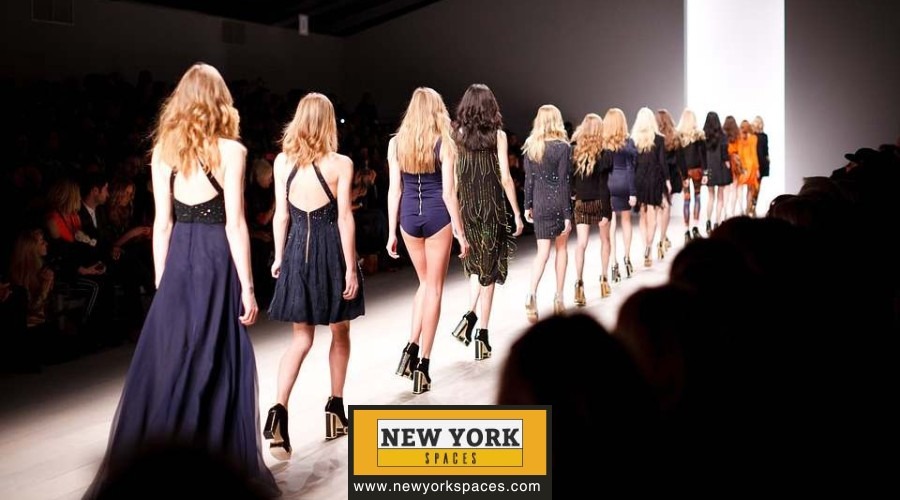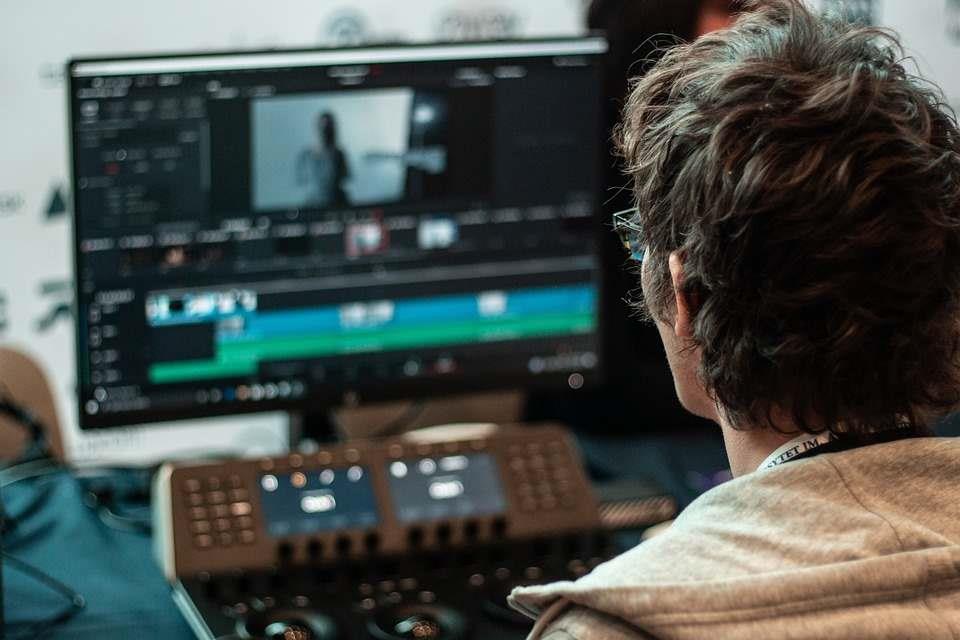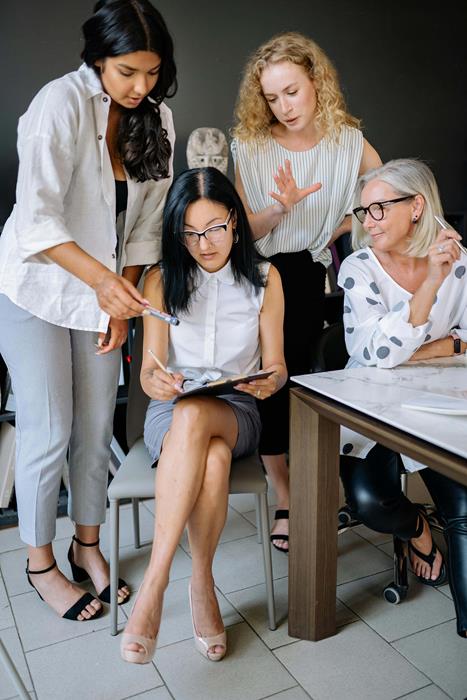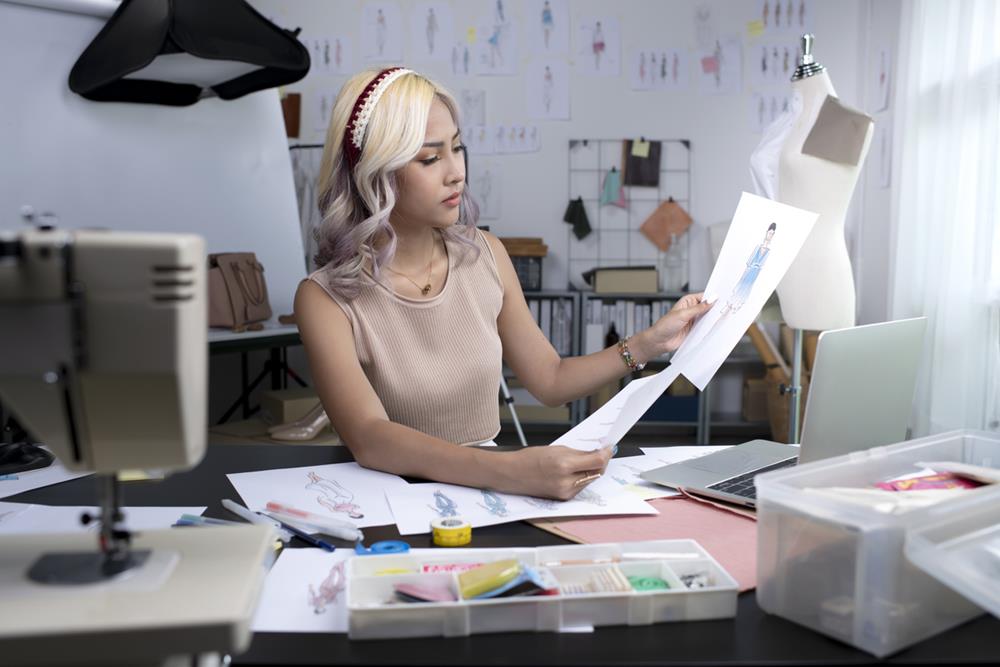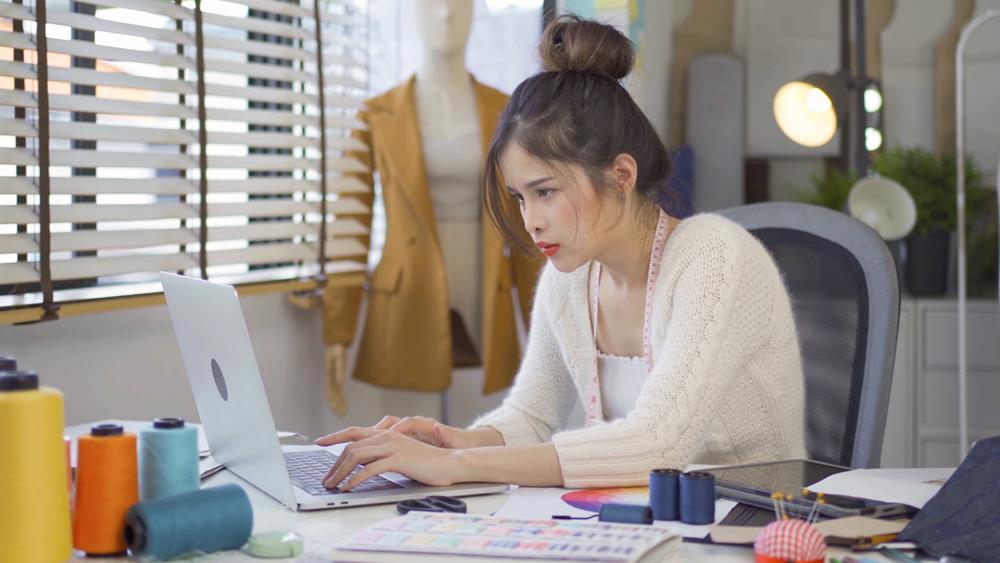In the ever-evolving world of fashion, the streets of New York City serve as both a canvas and a battleground for the latest trends, where fashion editors play a pivotal role as the architects of style. These gatekeepers of the fashion industry don’t just follow trends; they create them, wielding their influence through the pages of magazines and across digital platforms. Their keen eye for detail and deep understanding of the fashion landscape shape what we wear, how we wear it, and ultimately, how we define our identity through clothing.
This post aims to shed light on the intricate ways these tastemakers guide the fashion currents of NYC, illuminating their challenges, triumphs, and the undeniable mark they leave on the global fashion scene.
Definition of Fashion Editors and Their Role in the Fashion Industry
Fashion editors are the unsung heroes of the fashion world. They sift through the myriad of emerging trends, designs, and collections to decide what makes it onto the pages of our favorite fashion magazines and websites. More than just curators, they’re storytellers, weaving narratives around clothes and accessories that help us see beyond the fabric to the artistry and emotion of fashion. Their decisions influence not just what we wear but how we perceive fashion.
Overview of NYC as a Global Fashion Hub
New York City isn’t just a backdrop for countless movies; it’s also a leading character in the fashion world. Here, the streets are alive with a dynamic mix of styles, from the cutting-edge to the classic. NYC’s unique position as a melting pot of cultures and ideas makes it an ideal incubator for trends that eventually sweep the globe. Fashion editors in NYC have a front-row seat to this ever-changing world, drawing inspiration from the city’s energy to shape the fashion narratives of tomorrow.
The Influence of Fashion Editors on Trends
Fashion editors possess a unique influence, acting as both trendsetters and gatekeepers in the dynamic world of fashion. Their discerning eyes and creative minds play a pivotal role in what becomes the next big thing in style, from the pages of magazines to the dazzling runways of fashion week. Let’s dive deeper into how they wield this influence.
1. Curating Fashion Content for Publications
Fashion editors do more than pick pretty pictures; they create a vision. Their work involves:
- Selecting photoshoot themes that resonate with readers
- Choosing outfits that reflect upcoming trends
- Writing articles that give insight into the fashion world
These actions guide the aesthetic and tone of the publications we love, making fashion accessible and exciting for everyone.
2. Collaborations with Designers and Brands
Collaboration is vital in the fashion industry. Fashion editors often work closely with:
- Designers, to showcase upcoming collections
- Brands, to create exclusive stories or pieces
These partnerships bring fresh trends to the forefront and help tell the unique stories behind collections, making fashion a rich tapestry of creativity and collaboration.
3. Impact on Fashion Week and Runway Shows
The magic happens during fashion week, and fashion editors are the magicians. They play a crucial role in:
- Highlighting standout shows and trends
- Offering insights and critiques that can elevate or deflate a designer’s season
- Influencing which collections gain prominence and which ones fade into the background
Their perspectives help shape the narrative of fashion week, turning runway shows into trendsetters for seasons to come.
Fashion Editors and Their Role in Media
The media landscape is like a vast, ever-shifting sea, with fashion editors skillfully navigating between the waves of traditional and digital platforms. Their adaptability and keen sense of audience preferences make them pivotal in steering the direction of fashion trends.
Traditional Media vs. Digital Platforms
Fashion editors bridge the gap between the glossy pages of magazines and the instant accessibility of digital content. Here’s how they make their mark in both arenas:
- Traditional Media: In magazines, editors craft timeless pieces, focusing on depth, quality, and the tactile experience of flipping through pages adorned with stunning photography.
- Digital Platforms: Online, they adapt to the pace of the digital world, creating content that’s not only engaging but also shareable and immediately accessible. This includes interactive articles, multimedia content, and instant updates from fashion events.
This balance ensures that fashion editors have something special for you, whether you’re a fan of the printed page or a digital devotee.
Social Media’s Role in Trendsetting
Social media has turned the runway into a digital stage where everyone has a front-row seat. Fashion editors use these platforms to:
- Share behind-the-scenes glimpses of fashion events
- Highlight emerging trends and styles
- Engage directly with their audience, understanding and shaping their preferences in real-time
This immediate interaction brings a sense of community and democratizes fashion, allowing trends to emerge from the street level up to the high echelons of designer brands.
The Process of Trend Forecasting
Fashion editors are like the navigators of the fashion world, charting the course for what’s next in style. They’re always a step ahead, predicting trends that capture our imaginations and closets. Let’s delve into the art and science behind trend forecasting.
Research and Analysis Methods Used by Fashion Editors
Fashion editors employ a mix of intuition and analysis to forecast trends. This involves:
- Market Research: They analyze sales data, consumer behavior, and fashion industry reports to identify patterns and preferences.
- Runway Analysis: Editors meticulously review runway shows, identifying emerging themes and silhouettes likely to hit the mainstream.
- Global Inspiration: They draw inspiration from art, culture, and global fashion weeks, recognizing the global influences on local trends.
This blend of methods enables them to follow trends and anticipate them, setting the stage for the future.
The Interplay Between Street Style and High Fashion
The relationship between street style and high fashion is a dynamic dialogue, with each influencing the other. Fashion editors understand this conversation deeply:
- Street Style as Inspiration: Editors look to street style’s creativity and individuality as a barometer for public taste and emerging trends.
- High Fashion to Street Wear: They observe how high fashion adapts streetwear elements, making luxury more accessible and relevant to a broader audience.
This interplay ensures that fashion remains a living, breathing entity, continually evolving.
Future Trends Prediction
Predicting future trends is part art, part science. Fashion editors:
- Analyze Current Events: They consider the impact of social, economic, and environmental factors on fashion, understanding that trends often reflect the zeitgeist.
- Technological Advances: Editors stay abreast of technological innovations in fabrics and design techniques, foreseeing how these could shape future fashion.
- Cultural Shifts: By keeping a finger on the pulse of cultural movements, editors predict trends that resonate with emerging attitudes and lifestyles.
Their predictions guide the fashion industry, from designers to retailers, shaping the future of fashion with each forecast. Through their work, fashion editors tell us what we’ll be wearing next season and capture the spirit of our times, reflecting the world to us through the lens of fashion.
Challenges Faced by Fashion Editors
While often seen as the industry’s tastemakers, fashion editors face unique challenges that test their creativity, adaptability, and integrity. Understanding these hurdles offers insight into the complexities behind the glossy images and trending styles.
Balancing Personal Taste with Market Demands
Fashion editors walk a tightrope between their own aesthetic preferences and what the market desires. This delicate balance involves:
- Understanding Audience Preferences: Editors must deeply understand their readership’s tastes and how they evolve over time.
- Forecasting Trends: They predict which trends will appeal to their audience while staying true to their publication’s identity.
- Personal vs. Professional: Editors often navigate the challenge of featuring designs they might not personally prefer but recognize as necessary for their audience.
This balance ensures the content is authentic to the editor’s vision and relevant to the reader’s interests.
Navigating the Changing Landscape of Fashion Media
The fashion media landscape is in constant flux, with the rise of digital media presenting opportunities and challenges. Fashion editors must:
- Adapt to Digital Platforms: Transitioning from print to digital requires learning new skills and storytelling techniques.
- Engage with Social Media: Editors use social media to connect with audiences directly but must keep up with its fast-paced and ever-changing algorithms.
- Balance Quality and Quantity: The demand for constant content can pressure editors to compromise on quality, a balance they must carefully manage.
Staying relevant in this changing landscape requires adaptability, foresight, and a commitment to quality storytelling.
Ethical Considerations in Fashion Journalism
Ethical dilemmas are part and parcel of the fashion editor’s role. Key ethical considerations include:
- Transparency: Maintaining honesty about sponsorships and advertisements to keep trust with the audience.
- Sustainability: Highlighting sustainable fashion practices amid growing concerns about the industry’s environmental impact.
- Inclusivity: Ensuring representation of diverse body types, ethnicities, and cultures in their publications to reflect and respect the diversity of their readership.
Navigating these ethical considerations requires a careful balance of commercial interests and social responsibility. This highlights the critical role fashion editors play in shaping not just trends but also the values of the fashion industry. Fashion editors can advocate for a more ethical, inclusive, and conscious fashion world through their decisions.
Notable Fashion Editors and Their Impact on NYC Trends
A number of visionary fashion editors have significantly shaped New York City’s fashion scene. Their keen eyes and bold choices have left an indelible mark on what the city, and indeed the world, wears.
Profiles of Influential NYC Fashion Editors
Here, we celebrate a few of these iconic figures:
- The Trendsetter: Known for her ability to forecast trends months before they hit the streets, she has a knack for blending high fashion with streetwear, making luxury accessible.
- The Visionary: With a deep understanding of fashion’s historical context, this editor crafts stories that connect past, present, and future, influencing how we perceive fashion’s evolution.
- The Innovator: Focused on sustainability and ethical fashion, this editor has championed eco-friendly brands and practices, influencing the industry towards a greener future.
Key Trends Shaped by These Editors
These fashion editors have been instrumental in popularizing trends such as:
- Athleisure: Blurring the lines between workout wear and everyday clothing, making comfort chic.
- Minimalism: Emphasizing simplicity in design leads to a cleaner, more understated look that has dominated the fashion landscape.
- Sustainable Fashion: Highlighting the importance of environmentally friendly practices in the fashion industry, influencing designers and consumers to be more eco-conscious.
Quotes on Their Vision for Fashion
In their own words, these editors share insights into their vision:
- On Innovation: “Fashion is about evolution, not revolution. It’s about pushing boundaries while respecting our past.”
- On Sustainability: “Our planet’s health is non-negotiable. Fashion needs to lead the way in making the world a better place, one garment at a time.”
- On Accessibility: “Style should be inclusive. It’s not about the price tag but about how you express yourself.”
The Future of Fashion Editing in NYC
As we look to the future, it’s clear that fashion editing in NYC is poised for exciting changes driven by innovation, technology, and a deeper understanding of social issues.
Emerging Technologies and Their Potential Impact
Technological advancements such as AI, VR, and AR are set to revolutionize how fashion is curated and experienced:
- Virtual Fittings: Reducing the need for physical samples and making fashion more accessible.
- AI-Driven Trend Forecasting: Providing more accurate predictions of future trends based on vast datasets.
- Augmented Reality: Offering immersive experiences, allowing readers to “try on” outfits virtually.
The Evolving Role of the Fashion Editor
The role of the fashion editor is expanding beyond traditional boundaries:
- Content Creators: Engaging with audiences directly through social media and other digital platforms.
- Ethical Guides: Leading discussions on sustainability, inclusivity, and ethical practices within the fashion industry.
- Cultural Commentators: Addressing broader social and political issues through fashion.
Predictions for Future Trends in NYC Fashion
Looking ahead, we anticipate:
- A Focus on Sustainability: Eco-friendly and sustainable practices will become even more central to fashion narratives.
- Digital Integration: The line between physical and digital fashion will continue to blur, with digital collections and NFTs gaining popularity.
- Inclusivity and Diversity: There has been a continued push towards more inclusive representation in all aspects of fashion, from runway models to design inspirations.
As we move forward, the heart of NYC’s fashion scene remains its ability to adapt and innovate, with fashion editors leading the charge toward a more inclusive, sustainable, and technologically advanced industry.
Conclusion
As the curtain falls on our exploration of the influential world of fashion editors and their undeniable impact on NYC trends, it’s clear that these visionaries are much more than trendsetters. They are storytellers who weave the fabric of our cultural identity, curators who blend personal taste with the pulsating demands of the market, and pioneers who navigate the ever-evolving landscape of fashion media with grace and agility. From the tactile pages of magazines to the digital frontiers of social media, they guide us through the complexities of style with an ethical compass, championing sustainability, inclusivity, and innovation.
As we’ve journeyed through their challenges, collaborations, and predictions for the future, it’s evident that fashion editors do not merely reflect the zeitgeist; they shape it, making the world of fashion an endlessly fascinating reflection of human creativity and resilience.

